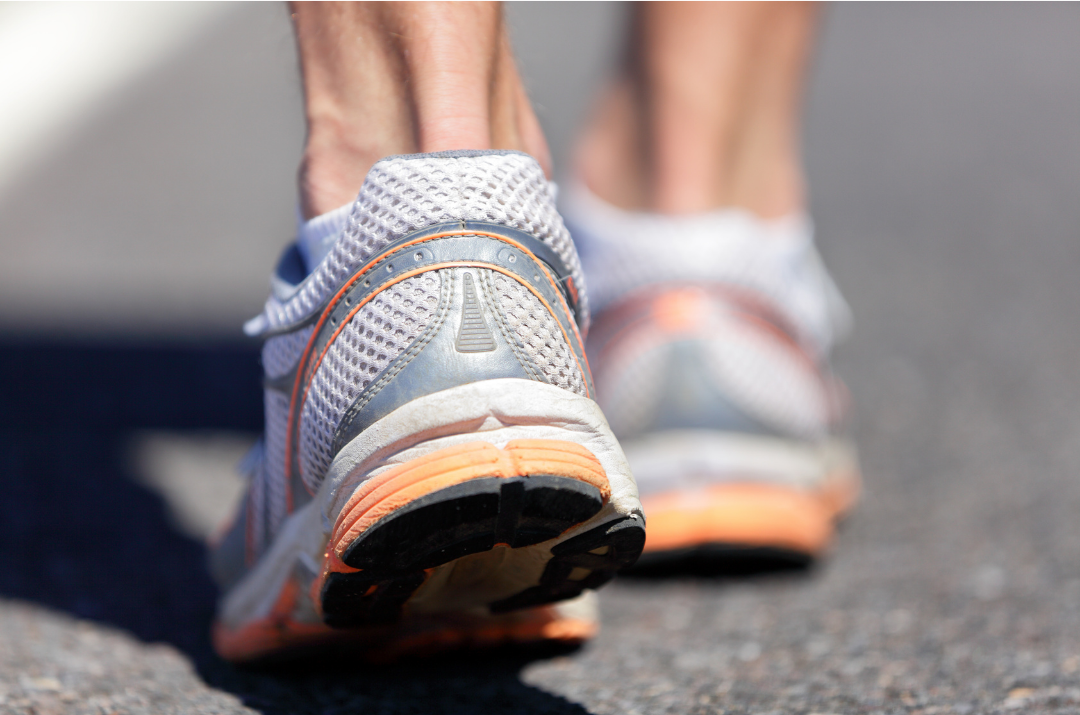The two most common causes of heel pain we see at Activate Physiotherapy are plantar fasciitis and Achilles tendinitis. Both conditions result in heel pain caused by overuse, therefore they tend to build up over time into a chronic problem. Heel pain from plantar fasciitis is generally felt on the underside of the heel, whereas Achilles tendinitis heel pain is usually experienced over the back of the heel.
Although both conditions can cause you to significantly reduce your level of activity the good news is they can be treated! Read on to determine which type of condition may be causing your heel pain and how it can be helped.
Plantar Fasciitis Heel Pain
The plantar fascia is a strong ligament that runs along the bottom of your foot from the base of the toes to your heel. Chronic stretching of the plantar fascia from fallen arches or even arches, ill-fitting footwear, weight gain or changes in training load and surfaces can results in inflammation of the plantar fascia known as plantar fasciitis.

If you’re experiencing pain on the sole of the foot or the underside of the heel that is worse when you first get up in the morning or after you’ve been sitting for a period it might be plantar fasciitis. Your pain might be worse when you’re in bare feet and on hard surfaces and even feel like you’ve trodden on a stone.
How to Fix Plantar Fasciitis Heel Pain
Initial treatment involves reducing the inflammation in the tissues by protecting them with strapping or orthotic innersoles to support the arches in conjunction with wearing supportive and well cushioned shoes. Ice and massage with a small roller or trigger ball can also assist.
After the initial treatment you may feel significantly better, however to prevent the problem from recurring, longer term treatment will look to correct any biomechanical issues in the foot and lower limbs. This can involve a series of stretches and strengthening exercises for the small muscles in your feet up to your calves and even glute and core muscles. Weight management may also be beneficial to resolving plantar fasciitis.
Achilles Tendinitis Heel Pain
The Achilles tendon is large tendon at the back of the heel that joins the calf muscle to the heel. Achilles tendonitis heel pain is caused by overuse of the calf muscles which causes micro traumas to the tendon. Over time the inflammation from repetitive trauma builds leading to pain, warmth and swelling over the back of the heel and up toward the calf muscle.

You may experience Achilles tendonitis as a result of participating in sports but it is also a common condition experienced by those who are fairly inactive or starting a new fitness routine. Pain can make it difficult to raise up onto your toes or push off when walking or running. You may also experience symptoms when your ankle flexes as the calf muscle and Achilles tendon is stretched.
Runners and those that play sports that involve jumping like netball, basketball and tennis are all more susceptible to Achilles tendinitis. Additional causes of Achilles tendinitis can include having either flat or high arches, having tight calves or prolonged wearing of high heels, being overweight and having medical conditions or taking some forms of antibiotics.
How to Fix Achilles Tendinitis Heel Pain
Initial treatment involves reducing the inflammation in the tissues by protecting them with strapping and placing small heel raises in supportive shoes to take the strain off the inflamed tendon. Orthotic innersoles to support the arches in conjunction with wearing supportive and well cushioned shoes. Ice and massage with a small roller or trigger ball to the calf can also assist. You may need to have a rest period from sport, however a physio can help you to find other physical activity that does not aggravate your heel pain.
After the initial treatment you may feel significantly better, however to allow you to return to sport and prevent the problem from recurring, longer term treatment will look to correct any biomechanical issues in the foot and lower limbs. This can involve a series of stretches and strengthening exercises for the small muscles in your feet up to your calves and even glute and core muscles. Weight management may also be beneficial to resolving Achilles tendonitis.
There are many other causes of heel pain, however without a specific trauma or incident plantar fasciitis and Achilles tendinitis are by far the most likely causes. Like always this advice is for general informative purposes only, if you are experiencing heel pain the best way to get to the bottom of what’s causing it is to see your Physiotherapist, Podiatrist or General Practitioner.
Our team of experienced Physiotherapists at Activate Physiotherapy are more than happy to assist. Contact us today or make an online booking at your nearest clinic the Brisbane suburbs or Gumdale or Stafford.

Recent Comments